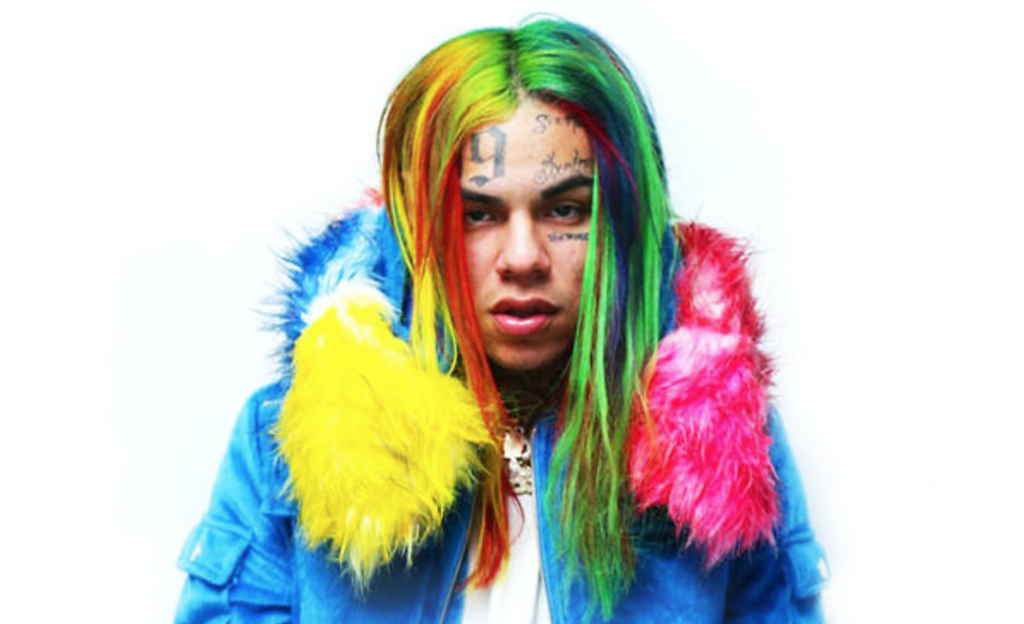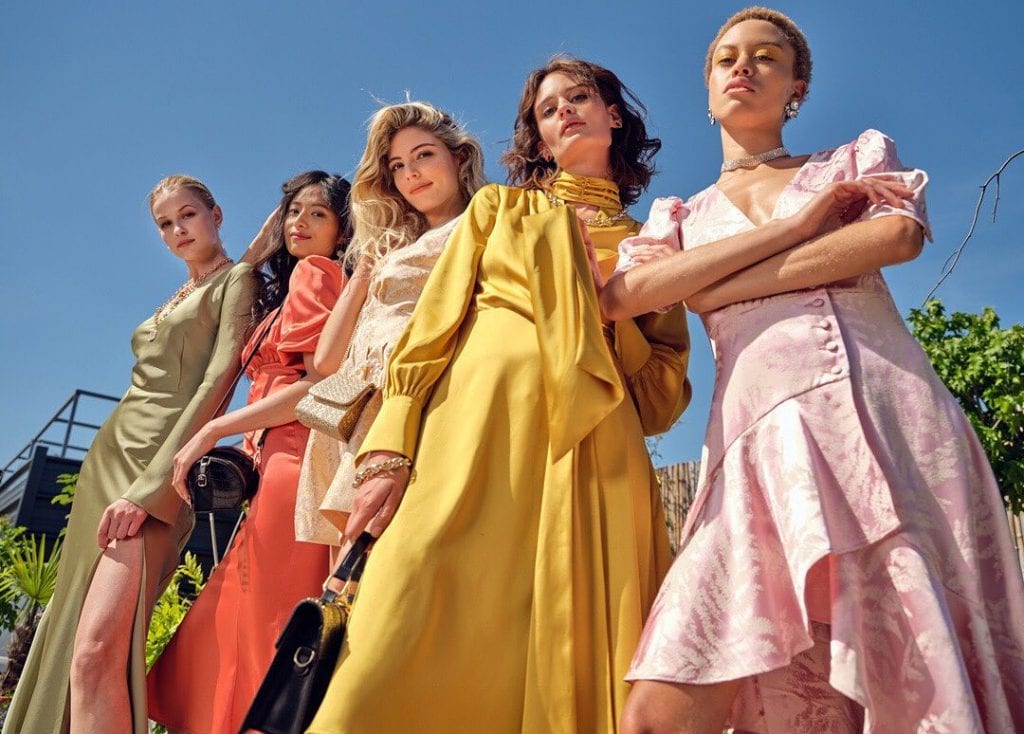Almost exactly a year ago, the video for a song called, Gummo, was uploaded onto YouTube. Within a mere 2 months, the video amassed more than 60 million views without the help of a major record label or management company. The single – the debut offering from a little-known New York-based rapper called Tekashi 6ix9ine – would go on to sell over 500,000 copies. And with that, the hip-hop community (and the singles charts) crowned the budding young musician its breakout star of 2017.
Now, a year later, the rainbow-haired, rainbow-grilled rapper has become better known in certain circles for his dalliances with the law than for his music-gone-viral, the latter of which includes collaborations with Kanye West and Nicki Minaj and top spots on the Billboard charts.
In reality, the career of Tekashi 6ix9ine – who was born Daniel Hernandez in Brooklyn, New York in 1996 – has been shrouded in controversy from the outset with cases in multiple states charging him with choking a 16-year-old girl, assaulting a police officer, driving on a suspended license, posting a video online that depicted a 13-year-old girl engaged in a sex act (he pled guilty and is now a registered sex offender as a result), and violating multiple parts of his probation agreements all the while.
All of those brushes with the law – and a number of recent shootings that have allegedly involved the rapper – aside, 22-year old Hernandez was arrested earlier this month in a joint effort carried out by the New York Police Department, the New York Field Division of the Bureau of Alcohol, Tobacco, Firearms, and Explosives, and U.S. Homeland Security Investigations based on racketeering and armed robbery, among other charges. Following an arraignment on November 19, the rapper – whose counsel offered up $1.1 million in cash for bail (only to be shot down by a New York state judge, who opted to keep the young rapper in custody) – is set to stand trial for the charges. If convicted, he could be forced to serve a life sentence in prison.
Most of the charges that have been lodged against Hernandez to date, but particularly as of this month, stem from his reportedly close involvement with the Nine Trey Bloods, a violent New York gang, which Hernandez is said to have first became associated with while serving time on drug charges at New York’s Rikers Island prison when he was just a teenager.
A statement from the U.S. Attorney’s Office for the Southern District of New York on November 19 confirmed the indictment of six members and associates of the Nine Trey Gangsta Bloods, also known as “Nine Trey.” U.S. Attorney Geoffrey S. Berman stated, “This gang, which includes platinum-selling rap artist Tekashi 6ix 9ine, wreaked havoc on New York City, engaging in brazen acts of violence.”
Angel M. Melendez, Special Agent-in-Charge of the New York Field Office of U.S. Immigration and Customs Enforcement’s Homeland Security Investigations, echoed this notion, saying, “Members of Nine Trey, who wielded firearms and pushed highly addictive drugs onto New York City streets, allegedly showed an unprecedented level of violence this year, and for that they are now facing multiple charges.”
But counsel for Hernandez argues that his client has been miscategorized. Sure, Hernandez’s song lyrics are rife with “frequent references [to] the Bloods [gang],” according to an October 2018 memorandum from the Manhattan District Attorney’s Office. And yes, his Instagram account, which boasts a following of more than 15.3 million, has on more than one occasion depicted the rapper holding automatic and semi-automatic rifles, and routinely serves to “celebrate gang involvement [and] provoke violence,” per the District Attorney’s Office. Still yet, there is the fact, as prosecutors point out in recently-filed court documents, that Hernandez “openly identifies as a member of the 9 Trey Bloods.”
Brooklyn, New York criminal defense attorney Lance Lazzaro, who is representing Hernandez, told a New York court during the rapper’s arraignment hearing last Monday that despite the foregoing, the rapper is “completely innocent of all charges.” In fact, Lazzaro argued that, in essence, Hernandez’s criminal ties are little more than an act, stating, “An entertainer who portrays a ‘gangster image’ to promote his music does not make him a member of an enterprise.”
This is not the first claim made to suggest that Hernandez is using gang-related references to boost his career. The Manhattan District Attorney’s memo made something of a similar reference, stating that Hernandez “posted [provocative] videos on Instagram in order to attract attention and further his image as a self-described ‘Scumbag.’” Moreover, the DA found that the rapper’s “confrontational behavior on social media has been an effective strategy for driving album sales and interest in his music.”
Nonetheless, law enforcement is adamant that Hernandez is not merely acting, and that his gang-affiliation and the extracurricular activities that come with it are very real.
Lyrics – and Lifestyle – as Evidence?
To what extent can the lyrics and the lifestyle embodied by many rappers to court clicks (potentially to gain followers, and sell records) be used in court? That is a question that judges across the country have been grappling with for several years.
Prosecutors across the U.S. have argued that rap lyrics and the accompanying videos should rightfully be considered evidence in court. Such lyrics, for instance, could serve to corroborate other evidence that state and/or district attorneys have gathered against an individual on trial, including serving as an admission of guilt and/or evidence of an individual’s character or motive.
The New Jersey Supreme Court, for one, lent credence to this argument in 2014, deciding that lyrics may, in fact, be used as evidence if there is a “strong nexus” between the specific lyrics and the crime. In that case, which centered on rapper Vonte Skinner’s attempted murder of Lamont Peterson, the prosecution argued that lyrics written by Skinner showed his “motive and willingness to resort to violence,” and supported their theory that he was acting as an enforcer for a drug crew to whom Peterson owed money.
The court ultimately decided that the lyrics could not be used as evidence in that specific case, holding, “[I]t has not been established by clear and convincing evidence … that defendant engaged in any of the events portrayed in his rap lyrics.” However, others have ruled differently. For instance, just this summer, a federal court in Dallas, Texas relied on lyrics in rap videos posted to YouTube and Facebook in sentencing rapper Nykees Earl Campbell to 12 years in federal prison on drug and gang-related charges.
U.S. District Judge Barbara Lynn granted Assistant U.S. Attorney Rick Calvert’s request for an enhanced prison term due to Campbell’s alleged violent gang activities, which he argued were well-documented in Campbell’s videos. In sentencing him to more than a decade behind bars, Judge Lynn told Campbell that much of the information she relied on fashioning the sentence “came out of your mouth.”
The Criminalization of Culture
The use of lyrics as evidence is part of a larger issue that is being routinely regarded as the criminalization of culture, since few other (read: whiter) genres of music or types of art have been subjected to such evidentiary practices. Problematic is that the battle of whether to use rap lyrics as evidence undoubtedly overlooks a critical fact, according to both legal and music experts: one of the central tenets of the art of gangsta rap, in particular – but also other genres of music for that matter – is the fictional element at play.
“Many rappers create stage names for themselves to signal that they are creating a persona,” says Erik Nielson, an associate liberal arts professor at the University of Richmond and a well-known expert in the use of rap music as evidence in criminal trials. “They are creating a character and then they are living out that character in their lyrics,” ultimately for the purpose of selling records, concert tickets, merch, and other goods/services.
As New York-based rapper Koran Supreme acknowledged in an interview with PBS, “Many artists create personas for mass appeal, popular demand and radio spins. Many even have ghost writers to create songs for them.” In this same vein, Bronx-based rapper, Madison, says, “The majority of rappers write for entertainment purposes with the dream of becoming successful.” More often than not, he says, “Artists intentionally fabricate over-exaggerated lyrics for the listeners’ enjoyment.”
The fictional elements of rap lyrics do not mean that the music “doesn’t have connections to the author’s or the creator’s everyday life,” per Nielson, “all fiction does to a certain extent.” That does not, however, change the fact that “famous artists are playing a role,” Paul Rothstein, a professor at Georgetown Law who is well known for his work in civil and criminal litigation, told ThinkProgress last fall. With that in mind, it should be “harder to argue in court that their lyrics should be taken literally.”
“It’s more plausible that a [professional] rap artist might be just performing art and fantasizing, as he makes his living at it,” he says.
Yet, prosecutors continue to push for evidence of rappers’ lyrics and lifestyles to be shown before juries, and in no small number of cases, they have been successful, which Nielson says “raises important questions about the way racial double standards operate to put rap music, and the people behind it, on trial” even when they are well-known for emulating the lyrics and the lifestyles of “the hardest, most explicit artists in order to advance their careers.”
In the case of Tekashi 6ix9ine, the problem, according to Assistant U.S. Attorney Michael Longyear and the Manhattan DA, alike, is that Hernandez’s act, which very well may be produced in order to attract fans, is based much more heavily in reality than fiction. In short: his violent behavior does not start, nor does it stop, with his hit songs or his Instagram persona.
Longyear told the court during the arraignment hearing earlier this month that Hernandez “is a member of a violent sect of the Bloods,” and had, in fact, “participated in multiple acts of violence.” The DA’s office agreed, stated that while Hernandez may be using gang-related depictions to gain traction on social media, his behavior is not just an act, and has led to more than record sales. It has “resulted in real life violence.”











